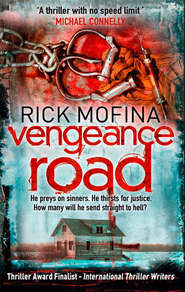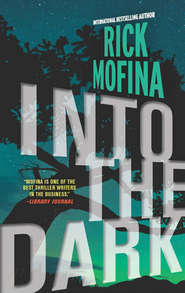По всем вопросам обращайтесь на: info@litportal.ru
(©) 2003-2024.
✖
Full Tilt
Автор
Год написания книги
2019
Настройки чтения
Размер шрифта
Высота строк
Поля
They’d passed the remainder of the afternoon with Grace coloring a project about the world’s oceans and chatting about her day while Kate got supper ready. Whenever she could, Kate thought about the case. That evening while they were watching The Wizard of Oz, Fred Byfield called.
“Kate, I talked with our people in Calgary affiliated with our network and I don’t have a lot more to add.”
“I’ll take anything, even advice.”
Kate patted Grace’s leg and left the sofa to take the call in the kitchen.
“Canadian police still have it listed as a cold case.”
“Yes.”
“No real leads, nothing at all, and both of the parents have since passed away.”
“I didn’t know that about the parents. How’d they die?”
“Accidents, maybe, we’re not sure but did you know that Tara Dawn was adopted?”
“Yeah, I found a magazine piece that mentioned it. Any details on that?”
“I don’t know, and our source in Calgary didn’t know.”
Kate considered the information.
“So what do you make of these factors? Is it Vanessa, Fred?”
“When you add them up—the necklace at the scene, the carved message from Tara Dawn Mae, the dates, ages and the fact they never found Vanessa’s body—they do present a compelling argument that your sister was at the Rampart crime scene.”
“But? I detect a ‘but’ in your tone.”
“But, you know as well as anyone, real life is not like mystery books and thriller movies where it all ties together nicely. Real life is complicated and missing persons cases can be complex. Simple factors that appear to be connected often have explanations proving there is no link whatsoever.”
“Yes, I know.”
“And there’s no DNA from Tara Dawn’s case to compare to yours, at least none that we know of. And we don’t know what Rampart police know, or what they may be telling the RCMP in Alberta about their case. Now you’ve got to decide what you’re going to do next. I think this warrants further investigation and we’ll help you as much as we can.”
“Thanks, Fred.”
Kate returned to the movie, sitting next to Grace. As Dorothy followed the yellow brick road in her quest to get back to Kansas, Kate searched for the right path she needed to take.
“You were talking about Aunt Vanessa on the phone,” Grace said. “I could hear you say her name.”
“Yes, I was.”
“Is that why you went away the other day, to look for her again?”
Kate looked at her and smiled. Grace was a smart little girl. Last year when she’d turned six, the same age as Vanessa at the time she went missing, Kate had told Grace about the crash, how she’d lost her hold of Vanessa’s hand, how they’d never found her and how she still looked for her everywhere. Grace understood, or seemed to, and Kate was okay talking about it with her.
“Yes, honey, that’s why I went away the other day.”
After the movie, as Kate got her into bed, Grace asked her a question.
“Are you going to go away again to look for Aunt Vanessa, Mom?”
“I’m not sure. I have some time off from work right now, so I’m not sure.”
“Maybe one day you’ll find her, Mom, just like Dorothy found her way back home to Kansas.”
Kate smiled.
“Maybe.”
Later that night, as Kate continued researching, she couldn’t help but think how her pursuit of the truth about Vanessa had turned into her own yellow brick road of doubt and defeat by dead-end leads. Kate was a reporter and, like a cop, needed facts. What she had now were puzzle pieces, and what she needed to do was keep digging for more to see if they all fit. Kate found herself on airline sites checking flights to Calgary.
Kate called Nancy.
After telling her everything, after explaining her situation, Kate was still unsure about leaving Grace, about the whole idea of going to Canada, with her job situation and everything else.
“There’s no question you have to go,” Nancy said. “This is part of the fabric of your life, of who you are. How would you live with yourself if, after all that’s happened, you never did all you could to find the truth about your sister because you’d left a big stone unturned? Go. I’ll take care of Grace.”
Five minutes later Kate booked a flight to Calgary.
14 (#ulink_6b910274-dbfa-5252-87e4-3aac4b4cfc64)
Rampart, New York
Pathologist Morten Compton sat at his desk in his basement office at Rampart General and reviewed his notes on the two deaths at the old burial grounds.
We’ve got to nail down the ID on the male. And the cause of death.
It was late and as Compton worked he started wheezing again. His wife had warned him to cut back on the meatball sub lunches at Sally’s Diner and to drop a few pounds. The job stress didn’t help.
Compton’s temporary assistant, Marsha Fisher, who’d gone for the day, had left him a summary.
Detective Brennan’s extremely anxious for updates.
As you know Dr. Hunt made dental charts, which we’ve circulated with no results so far. If the male victim had a dentist, it appears he didn’t visit one recently or locally.
One potentially positive new aspect: the forensic unit at the scene recovered a military dog tag in the vicinity of where the male was found. I’ve attached a photo of it. I’ve submitted it to the military’s National Personnel Records Center in St. Louis with an urgent request for comparison of our dental chart with the dog tag info. You should be hearing back anytime now.
Compton clicked on the image.
The dog tag was charred and twisted metal, but the information was clear to read. The name was: Pollard, J.C., blood type was O positive, followed by the Social Security number, and other information.
Compton stroked his Vandyke.
Were there more victims?
The blood type was the same as the presumed victim, Carl Nelson, but O positive was very common. The dog tag could have already been at the site and have no bearing on the victim. Then again, it could be a key piece of evidence.











